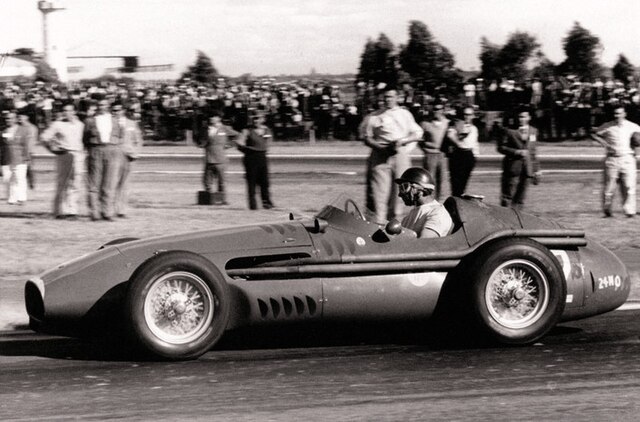The Maserati 4CL and its derived sister model the Maserati 4CLT are single-seat open-wheel Grand Prix racing cars that were designed and built by Maserati. The 4CL was introduced at the beginning of the 1939 season, as a rival to the Alfa Romeo 158 and various ERA models in the voiturette class of international Grand Prix motor racing. Although racing ceased during World War II, the 4CL was one of the front running models at the resumption of racing in the late 1940s. Experiments with two-stage supercharging and tubular chassis construction eventually led to the introduction of the revised 4CLT model in 1948. The 4CLT was steadily upgraded and updated over the following two years, resulting in the ultimate 4CLT/50 model, introduced for the inaugural year of the Formula One World Championship in 1950. In the immediate post-war period, and the first two years of the Formula One category, the 4CLT was the car of choice for many privateer entrants, leading to numerous examples being involved in most races during this period.

Maserati 4CL and 4CLT
Maserati 4CL and 4CLT
A 1939 Maserati 4CL
A Maserati 4CL at Oulton Park circa 1982
Maserati S.p.A. is an Italian luxury vehicle manufacturer. Established on 1 December 1914 in Bologna, Italy, the company's headquarters are now in Modena, and its emblem is a trident. The company has been owned by Stellantis since 2021. Maserati was initially associated with Ferrari. In May 2014, due to ambitious plans and product launches, Maserati sold a record of over 3,000 cars in one month. This caused them to increase production of the Quattroporte and Ghibli models. In addition to the Ghibli and Quattroporte, Maserati offers the Maserati GranTurismo and two SUV models, the Maserati Levante and the Maserati Grecale. Maserati has placed a yearly production output cap at 75,000 vehicles globally.
Headquarters in Modena, Italy
Ettore, Bindo, Ernesto, and Alfieri Maserati
Piazza Maggiore's Neptune and his trident
Juan-Manuel Fangio driving a Maserati 250F








